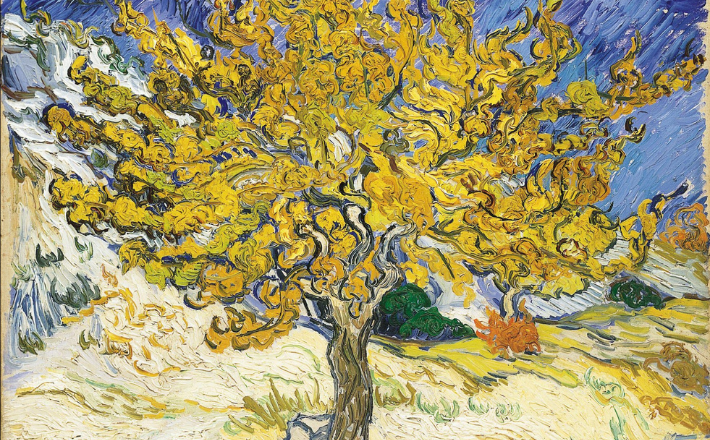Commentary on Lamentations 1:1-6
The book of Lamentations emerges from the disorienting aftermath of a pivotal moment in ancient Israelite history: namely, the Babylonian conquest of Jerusalem in 587 BCE.
Over a decade, the Judahites’ entire world fell apart. The final catastrophic event of Jerusalem’s destruction—including the temple, the Davidic monarch’s palace, and the sacred walls of the city—shattered the foundations of Judahite culture, society, and theology. Judahites lost their national sovereignty, long-lasting and stable monarchy, and large, impressive capital city; their temple, where they claimed that their God, YHWH, lived; and the fortifications believed to be divinely and miraculously impregnable (see also Psalm 48).
After the destruction of the symbolic anchors by which people stabilized their faith and understood the purpose of their corporate life, a vacuum of meaning emerged. Many around the world are experiencing a similar vacuum of meaning today; for some individuals, the death of a loved one renders the world unrecognizable, and for some communities, unending strife and oppression saps the dominant ideologies of their power to make sense of life’s non-sense. Lamentations’ disorientation and multiple layers of meaning mirror this situation.1
The simultaneous collapse of this cultural, political, and theological structure was felt as the loss of meaning itself. Judaeans like Jeremiah asked pointed questions (Jeremiah 14:19–22): Was YHWH defeated by the gods of Babylon?2 Did YHWH reject Judah? Was it even possible to mend this relationship, if YHWH—or Judah—ever wanted to do so?
To grasp the magnitude of the crisis, we need to understand the importance of Jerusalem and the Davidic monarchy in the symbolic world of ancient Judahites. They repeatedly emphasized a promise God had made to David (2 Samuel 7, 23; Psalms 2, 89, 110, 132), that Jerusalem would be safe and the Davidic line would reign forever. Prophets such as Isaiah reminded the people that faith in YHWH was simultaneously faith in the security of Jerusalem (Isaiah 7) and in the Davidic line, even though it faltered at times (Isaiah 9; 11).
It is important to remember that, outside of Israel and Judah, “covenant” was not a theological or religious concept in the ancient world. In fact, we know of no god in recorded history besides YHWH who makes a covenant with a people. “Covenant,” in the ancient sense, refers to a contract or a deal. Covenants covered various realms of life, including marriage and adoption. Other ancient cultures would have thought a contract with a god demeaning and strangely limiting for any god who claimed to be powerful. But in Israel and Judah, the covenant meant God could hold Judah (and even the Davidic king) accountable.
It also meant the people could hold YHWH accountable. The concept of a covenant as a symbolic marital bond between the people and YHWH led to metaphors of marriage in Judahite prophetic discourse, as found in the ethically problematic texts of Hosea 1–3 and Ezekiel 16. One must tread carefully and sensitively in these theological texts: they can be, and have often been, understood to promote and condone the abuse of women.3 Language in Lamentations 1, particularly in verses 8–9, alludes to sexual assault.4
In the ancient Middle East, many cultures personified cities as women (see also Isaiah 47:1), and in many of the prophets of ancient Judah, Jerusalem was imagined as the character “Daughter Zion” (Isaiah 1:8; Jeremiah 6:23; Micah 4:13; Zechariah 2:10). Paired with the covenant metaphor that imaged God as the spouse of the capital city, which was unique in the ancient context, this explains why the demise of the covenant—the destruction of Jerusalem, the desecration of the temple, and the end of the Davidic line (see also 2 Kings 25)––was nothing less than devastating to Judahites. To conceive of this incomprehensible situation, Judahite authors reimagined the devastation as a drama in which Daughter Zion was physically and emotionally abused.
In Lamentations, we hear the voice of a narrator who observes and describes Daughter Zion, and then we hear from Daughter Zion herself. In this way, Lamentations is a dialogue designed to help readers process and heal from these traumatic experiences.
The anonymous narrator tends to affirm traditional theological explanations for the disaster, frequently attributing it to the sins of the people, and seems to give voice to God’s perspective as a way of instructing us, the audience, about what happened—and why.5 Daughter Zion, on the other hand, gives voice to the raw pain and anguish of the trauma; she often questions, and sometimes challenges, the traditional theological framework.
The opening word of Lamentations, ’eka, typically asks a question, but here it expresses overwhelming shock and dismay: “How?!” In the Jewish tradition, this statement of shock (How) in Hebrew (‘Eka) is the very name of the biblical book. The speaker of verses 1–6 is the anonymous narrator, and it appears as if the narrator is engaging us in conversation about the suffering Zion as she weeps.
According to the narrator, Daughter Zion’s overwhelming sense is loneliness (1:1). Those who suffer from traumatic experiences often report a sense of detachment and isolation from others who do not understand, and at times simply ignore, the effects the trauma has on them. Daughter Zion explains that she feels like a widow (1:1), not only vulnerable (Exodus 22:21) but also having lost the social fabric of those she once relied upon and whose relationships gave sense and order to the world. In terms of the covenant analogy, Zion’s husband was YHWH. But YHWH is gone and she is abandoned, unsure whether restoration will ever be possible (5:22).
While YHWH was presumed to be the vigorous champion of orphans, widows, and aliens (Deuteronomy 24:19–21)—representing all vulnerable people who lack significant social bonds that ensure their well-being—the destruction of Jerusalem, and YHWH’s apparent absence or perhaps death, has thrown everything into question. The widow Daughter Zion cannot count on YHWH’s presence or aid. In the ancient world, vulnerable people were often taken advantage of and forced to work (mas, verse 1; ‘abodah, verse 3) for the powerful, as happened to the Hebrews in Egypt (Exodus 1:10–11).
Because of her suffering, Zion weeps (verse 2). Mention of her “lovers” and “friends” by the narrator (verse 2) refers to the foreign nations with which Judah made alliances and foreign gods that some of the kings and inhabitants served—a violation of the exclusive marriage-like covenant with YHWH (see also Hosea 2). They have now abandoned her, and so has YHWH. The former city of Jerusalem, reduced to a pile of rubble, attracts no visitors now, in distinction to its previously popular pilgrimage festivals (verse 4). Ultimately, the narrator argues, YHWH has done this because of the “breach of contract” (verse 5).
Starting at the end of verse 9, Daughter Zion herself speaks, which offers an important perspective and a counterbalance to the theological claims of the narrator. A repeated refrain, especially in chapter 1, is that there is “no one to comfort her” (1:2, 16, 21). Zion asks God to look at her (1:9, 11, 20) and asks the passersby to stop and notice her (1:12), but no one does—except for us, the readers, and the anonymous narrator: We see, and feel, her pain. We witness her suffering, and by witnessing it, we might help her know that her experiences are not only real—they matter. Kathleen O’Connor argues that a major theological contribution of Lamentations is its theology of witnessing to the existence and persistence of suffering.6
Many recent scholars have argued that the conversational structure of Lamentations is designed to help people process trauma.7 Daughter Zion’s passionate laments provide a cathartic outlet for the pain and anger felt by the ancient residents of the devastated Judah—and by those who have lived through similarly devastating experiences ever since. Verbalizing and legitimizing these emotions are important aspects of the healing process.
The dialogue between these voices creates a form of witnessing to the trauma—which is crucial in trauma recovery. The back-and-forth conversation also reflects the non-linear nature of grappling with traumatic experiences, moving in cycles of grief, anger, acceptance, and questioning. By not fully resolving the tension between these voices, and ending the book with an open question about the unknown future (5:22), Lamentations creates space for readers to hold the ambiguity and uncertainty that often accompany trauma.
For preachers, it is important to understand Lamentations as a difficult and painful conversation that nevertheless offers a space for healing. As a biblical book, it presents complex, but potentially rich, homiletical possibilities.
For those who are suffering, it may guide a process of reflecting on harmful experiences and modeling ways to voice anger, confusion, and guilt. For those who are not suffering in ways similar to Daughter Zion, Lamentations can create space in community to witness to diverse voices, perspectives, and experiences. A ministry of witness can be a powerful tool for collective healing, especially amid a culture that often tries to hide uncomfortable experiences and feelings under a façade of cheeriness and optimism.
Notes
- See Elizabeth Boase, The Fulfillment of Doom? The Dialogic Interaction between the Book of Lamentations and the Pre-Exilic/Early Exilic Prophetic Literature, LHBOTS 437 (New York: T&T Clark, 2006), 17; F. W. Dobbs-Allsopp, Lamentations: A Bible Commentary for Teaching and Preaching (Louisville: John Knox, 2002), 61.
- Nancy C. Lee, The Singers of Lamentations: Cities under Siege, from Ur to Jerusalem to Sarajevo (Leiden: Brill, 2002), 69–130.
- See Renita Weems, Battered Love: Marriage, Sex, and Violence in the Hebrew Prophets (Minneapolis: Augsburg Fortress, 1995), 1–51.
- See Deryn Guest, “Hiding Behind the Naked Women in Lamentations: A Recriminative Response,” BibInt 7 (1999): 413–48
- Carleen Mandolfo, “Dialogic Form Criticism: An Intertextual Reading of Lamentations and Psalms of Lament,” in Bakhtin and Genre Theory in Biblical Studies, ed. Roland Boer (Atlanta: Society of Biblical Literature, 2007), 85.
- Kathleen O’Connor, Lamentations and the Tears of the World (Maryknoll, NY: Orbis, 2002), 3.
- See O’Connor, Lamentations; Mandolfo, “Dialogic Form Criticism.”


October 5, 2025